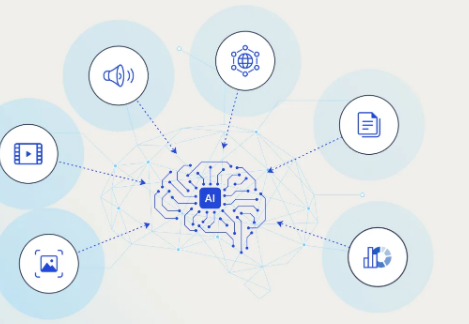Multi-Modal AI Models: Understanding Text, Image & Video
Multi-modal AI models represent a significant advancement in artificial intelligence, integrating text, image, and video data to provide nuanced insights. This integration allows for a multifaceted analysis of complex information, enhancing the accuracy of decision-making processes across various domains. As these models evolve, understanding their mechanics and applications becomes crucial. However, the implications of their use raise important questions about ethical considerations and societal impact that demand further examination.
The Mechanics of Multi-Modal AI Models
Although multi-modal AI models integrate diverse data types, their underlying mechanics hinge on several key principles.
Central to their functionality is data fusion, which synthesizes information from various modalities to enhance understanding.
Effective model training is crucial, as it ensures that the AI learns complex interrelationships inherent in the data.
This process empowers the model to deliver coherent insights across text, image, and video formats.
Real-World Applications of Multi-Modal AI
Multi-modal AI models have demonstrated significant utility across various sectors, leveraging their ability to process and analyze different forms of data simultaneously.
In healthcare diagnostics, these models enhance accuracy by integrating medical imaging with patient records.
Additionally, in content creation, they streamline workflows by automatically generating visuals and text, thereby enabling creators to produce engaging materials efficiently while maximizing resource utilization.
Read Also: 4232995972 Best Tech Stocks to Watch in 2025
The Future of Multi-Modal AI Technology
As advancements in artificial intelligence continue to accelerate, the future of multi-modal AI technology appears poised to revolutionize various industries.
Integrating diverse data modalities enhances user experience, fostering more intuitive interactions.
However, this evolution necessitates rigorous ethics considerations to ensure responsible deployment.
Balancing innovation with ethical standards will be crucial in shaping a future where multi-modal AI benefits society while respecting individual freedoms.
Conclusion
In a world where multi-modal AI models promise to revolutionize decision-making and diagnostics, one might ironically ponder whether the true challenge lies not in the technology’s capabilities, but in humanity’s ability to wield such powerful tools responsibly. As these models blend text, image, and video into cohesive insights, the potential for misuse looms large, suggesting that the greatest leap forward may simultaneously invite a step back into ethical quandaries. The future may well depend on our choices, not just our innovations.






